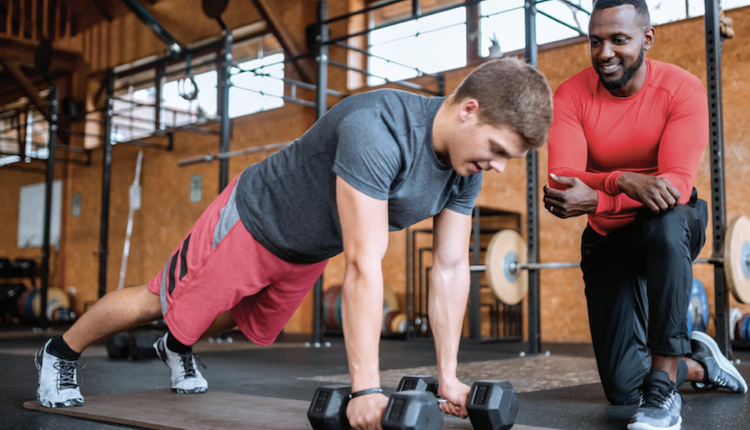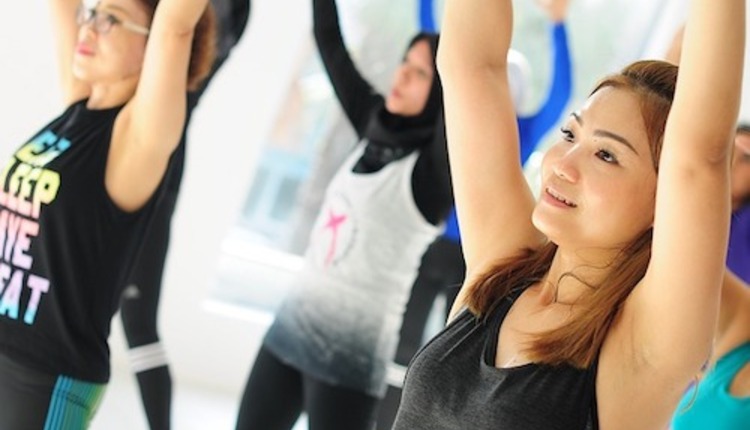IDEA Health & Fitness Association, the leading membership organization of health, wellness and fitness professionals worldwide with more than 23,000 members in over 80 countries, has published the results of its 14th annual IDEA Fitness Programs & Equipment Trends Report. The survey, which is geared to fitness program directors and facility managers, reveals that while the fitness market may not be booming, it seems to be at least stable when businesses worldwide are failing. Overall, respondents have a positive attitude; the trends report found that the percentage of respondents expecting growth was generally higher than the percentage expecting declines.
The really encouraging aspect of this year’s results is that the diversity of fitness classes, equipment and programs offered has continued to increase. This is critical, as the wide range of services the fitness industry offers needs to keep pace with the growing diversity of the populations it serves, including apparently healthy adults, clients with injuries and chronic disease, amateur and professional athletes, seniors and children.
“It’s apparent that fitness program directors and managers have found interesting ways to respond to the shifting desires and needs of fitness consumers,” says Kathie Davis, executive director of IDEA. “This may mean finding new ways to use existing fitness equipment or trying new programming for personal training, group exercise and mind-body activities. The ingenuity of fitness facility leaders and staff has kept customers engaged and coming through the doors of their facilities even through these dark economic days.”
Following are highlights from the 2009 IDEA Fitness Programs & Equipment Trends Report that include a solid picture of the most up-to-date fitness research available. A synopsis of the Trends Report for readers is available athttp://www.ideafit.com/fitness-library/your-industry-facts:
- Personal training, adult, one-on-one again leads the personal training category, with 89% of respondents offering it.
- Increases over the past 9 years have occurred in all personal training categories, with the greatest improvements reflected in 2 clients sharing, which rose 23 percentage points to 79% this year versus 56% in 2001. Likewise, the category 3-5 clients sharing, rose an impressive 26 percentage points to 60% this year from 34% in 2001.
- Small-group boot camps and small-group circuit training, new to the personal training category of the survey this year, are offered by 47% and 55%, respectively, of those surveyed. This reflects a growing practice of providing more cost-effective training options for clients and facilities alike. Budget strapped clients don’t have to give up training altogether and personal training departments can generate more revenue during the same time slot.
- In the group exercise room, combination/hybrid classes have experienced the largest decline over the past 9 years (-35 percentage points from 2001 to 2009) while dance has demonstrated the largest growth data (+20 percentage points from 2001 to 2009). Aerobics, combined (high- low- and mixed impact) seems to have been revived in the past year, having grown 8 percentage points between 2008-2009.
- Pilates exercise has steadily increased as a mind-body offering over the past 9 years, growing from 47% to 70%. Pilates equipment has also enjoyed an increase in usage in the 8 years IDEA has tracked it, growing from 29% to 44%. An explanation for why the growth in equipment has not matched the growth of Pilates itself is likely that many facilities accommodate demand for Pilates through group exercise mat-based classes versus equipment-based, which are most often conducted 1 to 1 or in small groups of 3-5.
- As in the past few years, the most widely used equipment in fitness centers today is small, portable and versatile. Resistance tubing or bands (94%), stability balls (92%), barbells and/or dumbbells (91%), foam rollers and small balls (81%), balance equipment (80%), and medicine balls (79%) are offered by most facilities surveyed. These results reflect a desire for portability and versatility, a shift to more functional exercise and less emphasis on big, bulky pieces that emphasize one-dimensional movement.
- This year’s respondents are expecting balance equipment and suspension training appratus to gain in popularity, with 55% and 52%, respectively, anticipating growth in their usage. These are the only two categories in which more respondents expect growth than expect no growth or a decline in usage.
- The largest declines in projected equipment usage were reported for stair climbers (25%), pneumatic machines (20%) and interactive computer training programs (20%).
- The 10 Fitness Programs With Growth Potential (generally offered by less than half of the respondents) are as follows: Mind-body fusion (16% offer, 81% believe it will grow); Teen fitness (30%-61%); Social activity groups (walking or running clubs, group trips, organized group activities) (45%-55%); Seniors’ classes (55%-55%); Small-gorup classes on machines (32%-55%); Combination/Hybrid classes (36%-54%); Dance (e.g., urban street, funk, hip-hop) (39%-52%); Small group boot camps (47%-52%); Boot camp classes, indoor (51%-49%); Group activities, outdoor (32%-49%); Small-group classes, 8 people or fewer (58%-49%).
- In this year’s survey, respondents were less supportive of equipment growth than in past years. Just two of 10 pieces garnered more than a 50% vote for growth. Last year’s survey posted 7 pieces above 50%. The 10 Types of Equipment Predicted to Grow are: Balance equipment (80% offer it; 55% expect it to grow); Suspension training apparatus (25%-52%); Foam rollers and small balls(81%-48%); Pilates equipment (44%-43%); Child-sized machines (5%-40%); Computer training programs, interactive (10%-40%); Elliptical trainers (67%-39%); Cycles, for indoor classes (45%-38%); Computer workout tracking (17%-37%); Medicine balls (79%-36%).
- Other areas that saw notable year-over-year growth (2008-2009) included exercise programs for chronic medical conditions (diabetes or coronary heart disease) +6 percentage points to 46% offer; fitness assessment (+5 percentage points to 81%); lifestyle coaching (+ 5 percentage points to 38%); Pilates or yoga training, one-on-one (+8 percentage points to 56%); seniors classes (+4 percentage points to 55%); step aerobics (+7 percentage points to 53%); and weight management classes (+7 percentage points to 38%).
IDEA Health & Fitness Association is the world’s leading membership organization of fitness and wellness professionals with more than 23,000 members in over 80 countries. Since 1982, IDEA has provided personal trainers, group exercise instructors, fitness program directors, mind-body teachers, health club owners and fitness center managers with pertinent information, health and fitness educational opportunities, career development programs and industry leadership while helping them enhance the quality of life worldwide through safe, effective lifestyle and fitness programs. IDEA members interact with consumers more than 25 million times a year in the fitness marketplace. For more information on IDEA fitness and wellness conferences, publications, professional fitness education and products, member services and other activities, visit http://www.ideafit.com.











